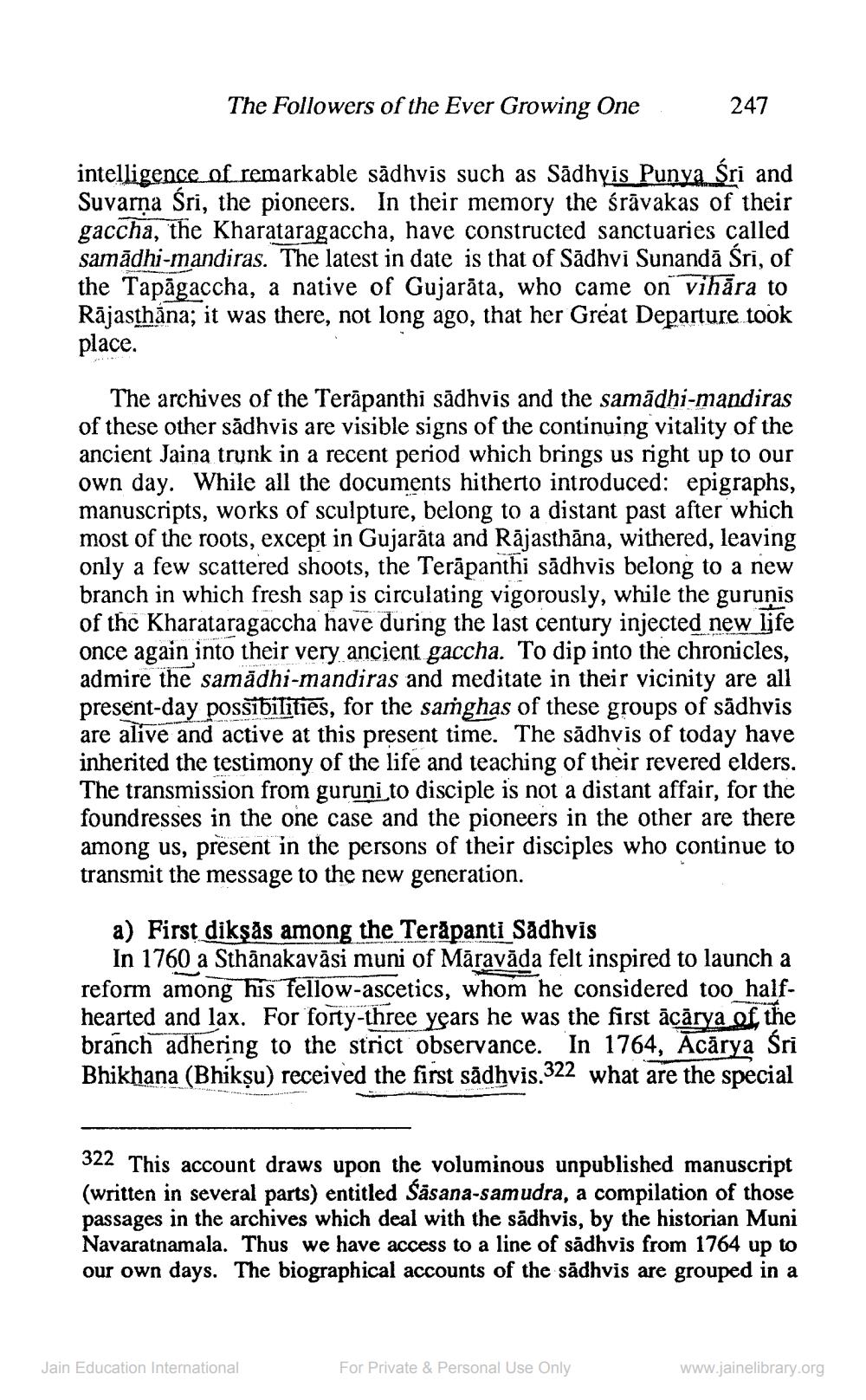________________
The Followers of the Ever Growing One.
247
intelligence of remarkable sådhvis such as Sãdhyis Punya Sri and Suvarna Sri, the pioneers. In their memory the śrāvakas of their gaccha, the Kharataragaccha, have constructed sanctuaries called samādhi-mandiras. The latest in date is that of Sādhvi Sunandā Šri, of the Tapāgaccha, a native of Gujarāta, who came on vihăra to Rājasthāna; it was there, not long ago, that her Great Departure took place.
The archives of the Terāpanthi sādhvis and the samādhi-mandiras of these other sādhvis are visible signs of the continuing vitality of the ancient Jaina trunk in a recent period which brings us right up to our own day. While all the documents hitherto introduced: epigraphs, manuscripts, works of sculpture, belong to a distant past after which most of the roots, except in Gujarāta and Rājasthāna, withered, leaving only a few scattered shoots, the Terāpanthi sādhvis belong to a new branch in which fresh sap is circulating vigorously, while the guruņis of thc Kharataragaccha have during the last century injected new life once again into their very ancient gaccha. To dip into the chronicles, admire the samădhi-mandiras and meditate in their vicinity are all present-day possibilities, for the samghas of these groups of sādhvis are alive and active at this present time. The sādhvis of today have inherited the testimony of the life and teaching of their revered elders. The transmission from guruni to disciple is not a distant affair, for the foundresses in the one case and the pioneers in the other are there among us, present in the persons of their disciples who continue to transmit the message to the new generation.
a) First diksas among the Teràpanti Sadhvis
In 1760 a Sthānakavāsi muni of Māravāda felt inspired to launch a reform among his fellow-ascetics, whom he considered too halfhearted and lax. For forty-three years he was the first ācārya of the branch adhering to the strict observance. In 1764. Acārya Sri Bhikhana (Bhikṣu) received the first sādhvis.322 what are the special
322 This account draws upon the voluminous unpublished manuscript (written in several parts) entitled säsana-samudra, a compilation of those passages in the archives which deal with the sadhvis, by the historian Muni Navaratnamala. Thus we have access to a line of sadhvis from 1764 up to our own days. The biographical accounts of the sadhvis are grouped in a
Jain Education International
For Private & Personal Use Only
www.jainelibrary.org




